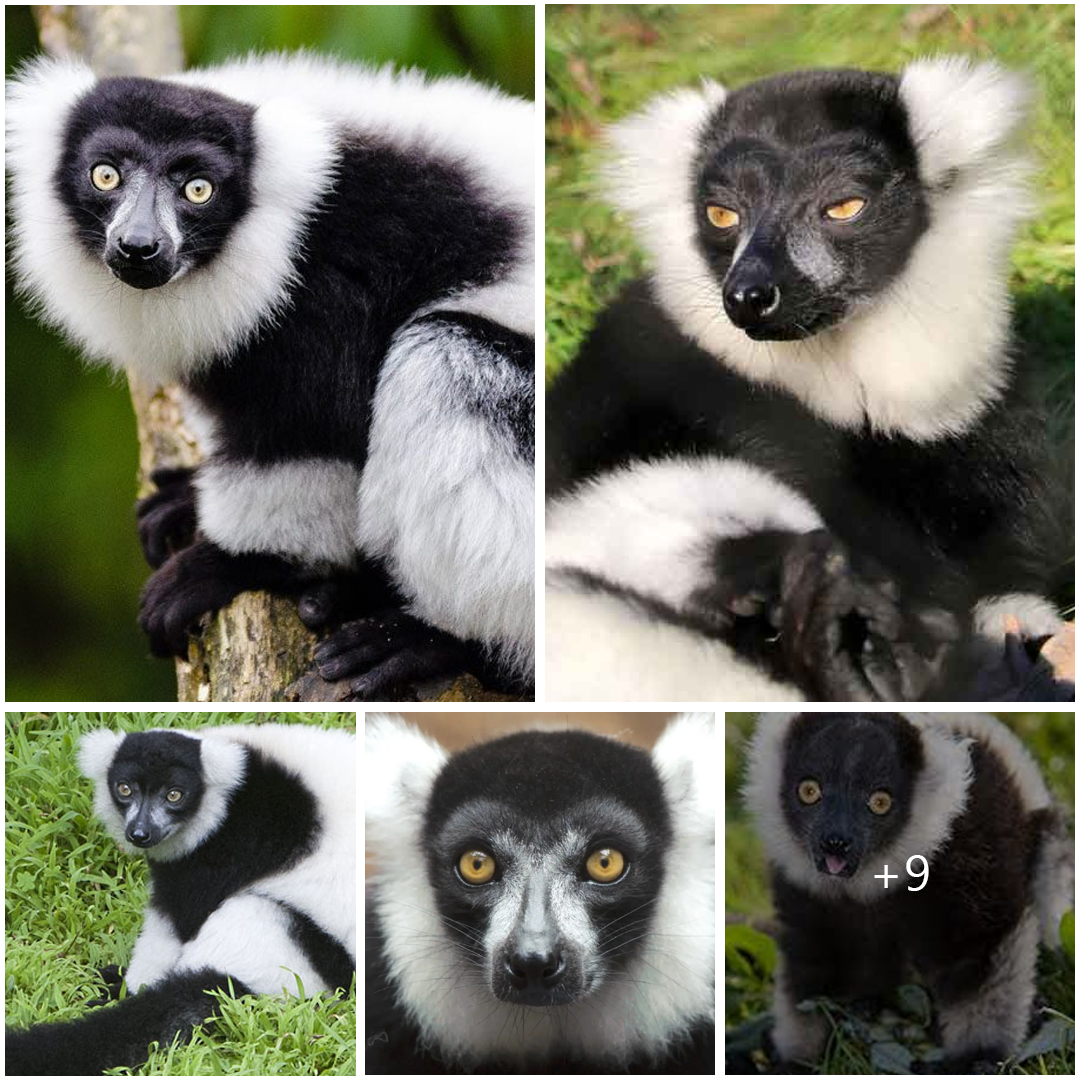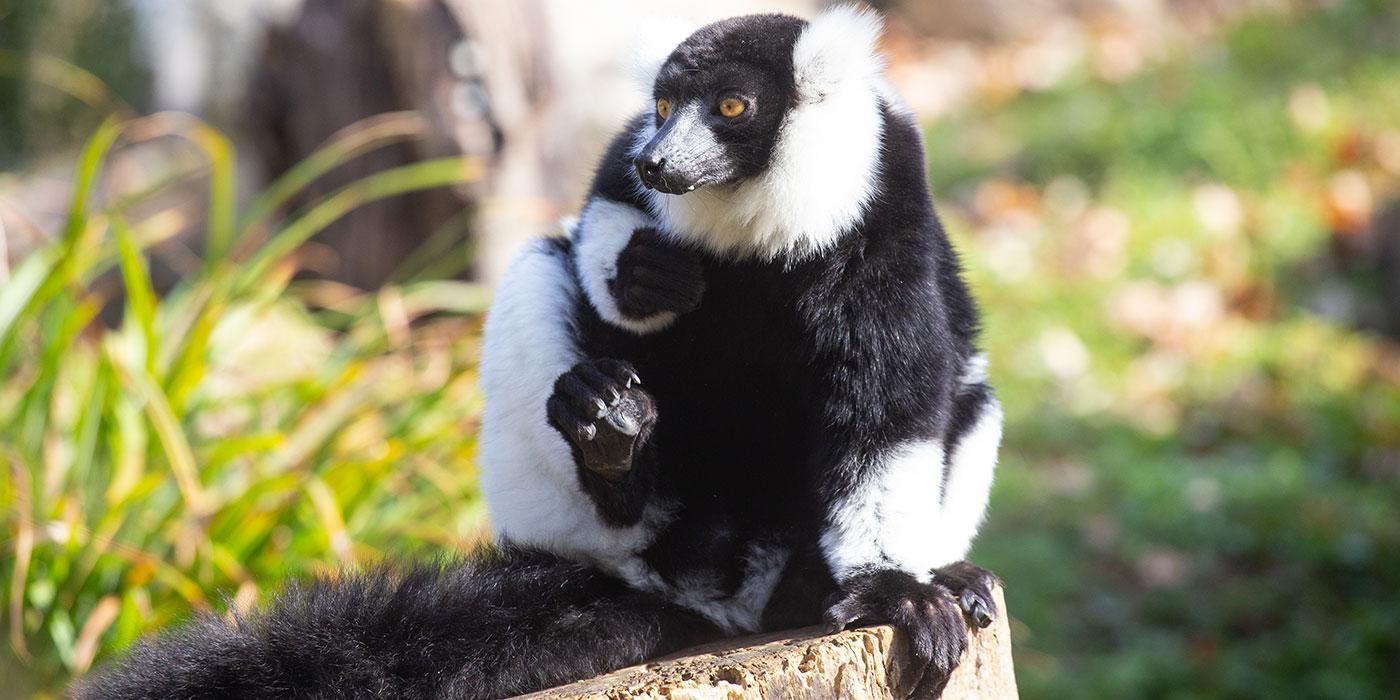
The Magnificent Black-and-White Ruffed Lemur: Guardian of Madagascar’s Forests
The Black-and-White Ruffed Lemur (Varecia variegata) stands as a symbol of Madagascar’s rich biodiversity and serves a vital role in the island’s delicate ecosystem. With its striking appearance and unique behaviors, this charismatic primate species has captured the attention of scientists and nature enthusiasts worldwide. In this article, we explore the characteristics, habitat, behavior, and conservation status of the Black-and-White Ruffed Lemur.
Appearance: The Black-and-White Ruffed Lemur is easily recognizable by its distinctive black-and-white fur, which forms a striking contrast against the lush greenery of Madagascar’s rainforests. Its long, bushy tail and expressive face add to its appeal, while its large, amber-colored eyes convey a sense of intelligence and curiosity. This lemur species exhibits sexual dimorphism, with males typically larger than females and possessing more prominent facial features.

Habitat: Black-and-White Ruffed Lemurs are endemic to the rainforests of northeastern Madagascar, where they inhabit a variety of forest types, including lowland and montane rainforests. They are arboreal creatures, spending the majority of their time in the forest canopy, where they forage for food, socialize, and seek shelter. These lemurs are highly adaptable and can tolerate disturbed habitats to some extent, but they rely on intact, primary forests for their long-term survival.
Behavior: As social animals, Black-and-White Ruffed Lemurs live in small family groups known as troops, which typically consist of a dominant breeding pair and their offspring. They communicate through a variety of vocalizations, including loud, resonant calls that can be heard over long distances in the forest. These lemurs are primarily frugivorous, feeding on a diverse array of fruits, but they also consume leaves, flowers, and occasionally insects.
Reproduction: Breeding in Black-and-White Ruffed Lemurs is synchronized with the seasonal availability of food, with mating typically occurring during the wet season. After a gestation period of approximately 90 to 102 days, females give birth to one to six offspring, known as pups. The pups are born fully furred and with their eyes open, and they cling to their mother’s belly for the first few weeks of life before becoming more independent.

Conservation Status: The Black-and-White Ruffed Lemur is classified as critically endangered by the International Union for Conservation of Nature (IUCN), with populations declining rapidly due to habitat loss and fragmentation, hunting, and illegal pet trade. Deforestation, slash-and-burn agriculture, and logging pose significant threats to their remaining habitat, pushing this iconic lemur species to the brink of extinction. Conservation efforts focused on habitat protection, community engagement, and sustainable land management are crucial for saving the Black-and-White Ruffed Lemur from extinction.
In conclusion, the Black-and-White Ruffed Lemur embodies the beauty and diversity of Madagascar’s unique ecosystems. As ambassadors for the island’s rich biodiversity, these lemurs serve as a poignant reminder of the urgent need for conservation action to protect their forest home and ensure the survival of future generations.





